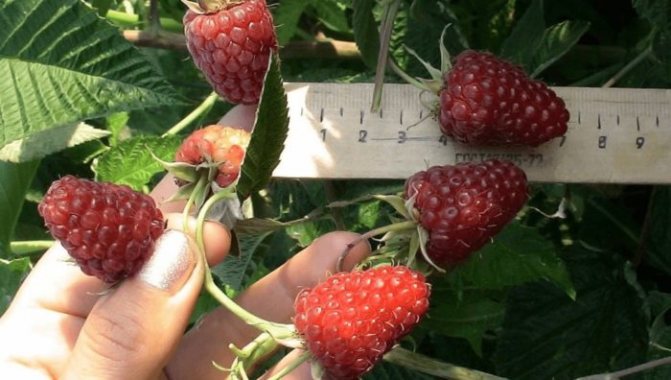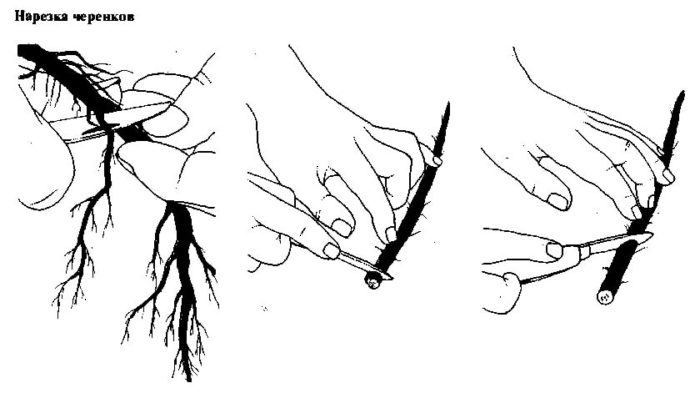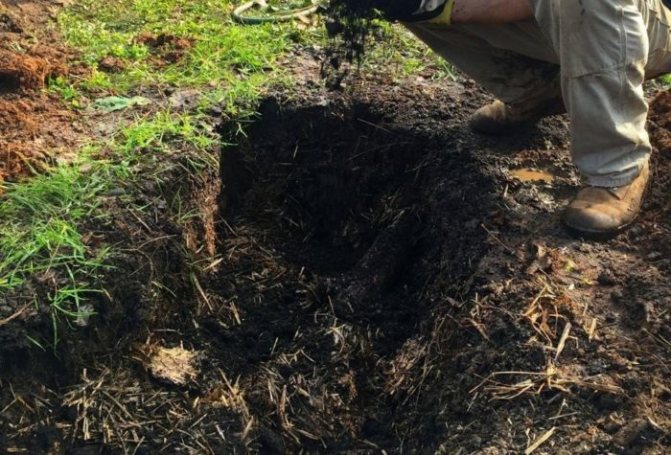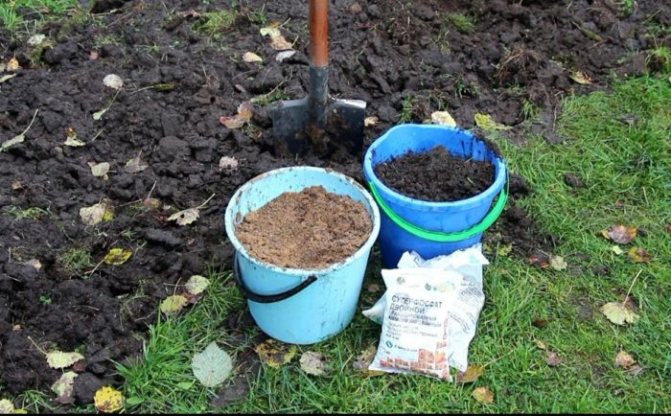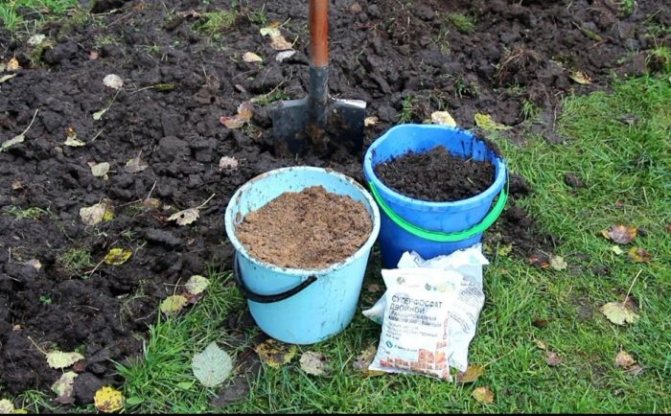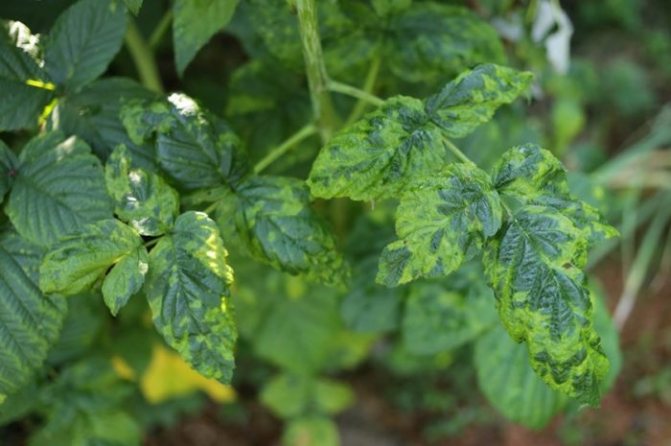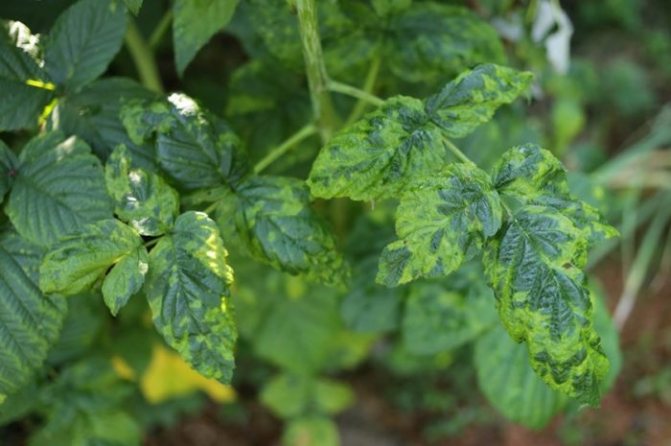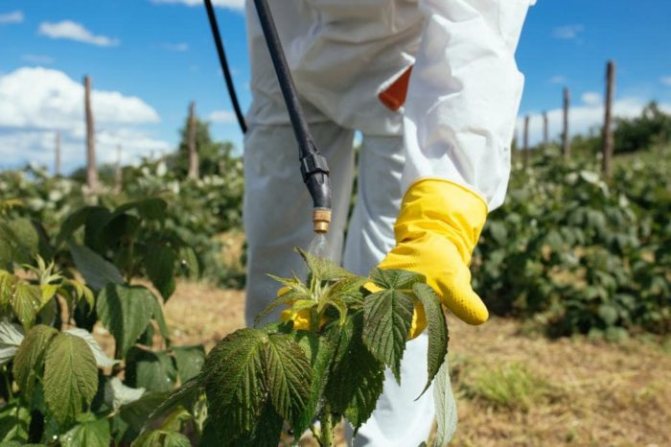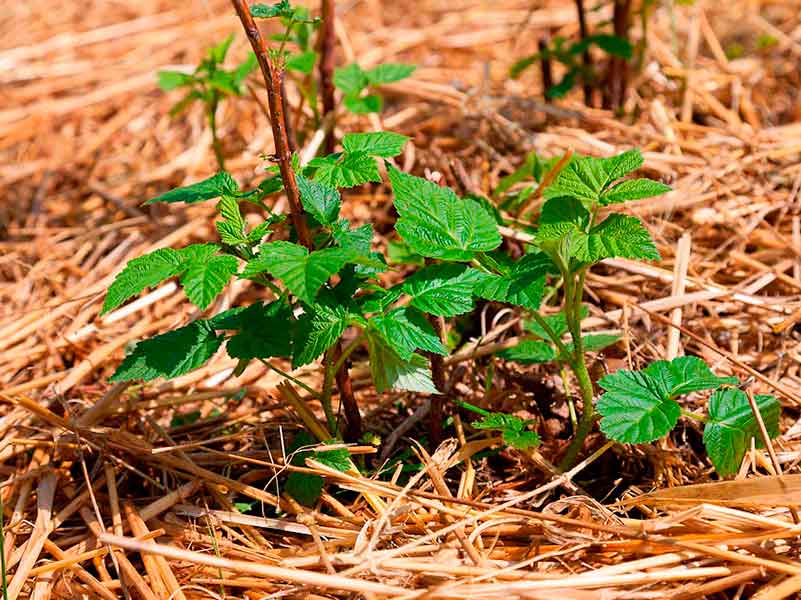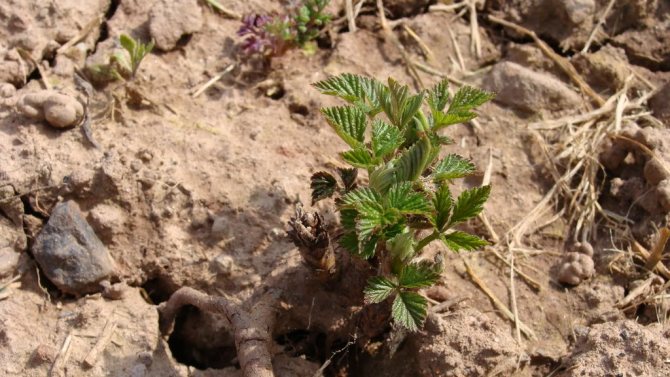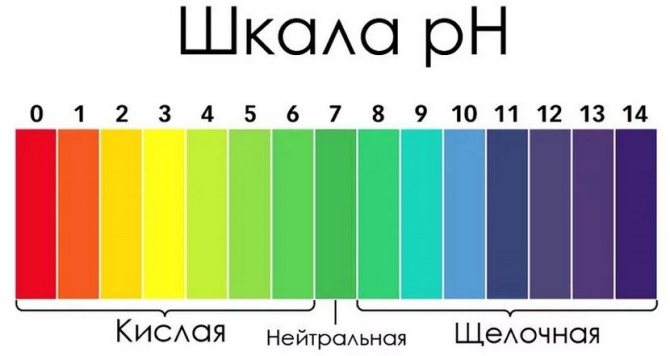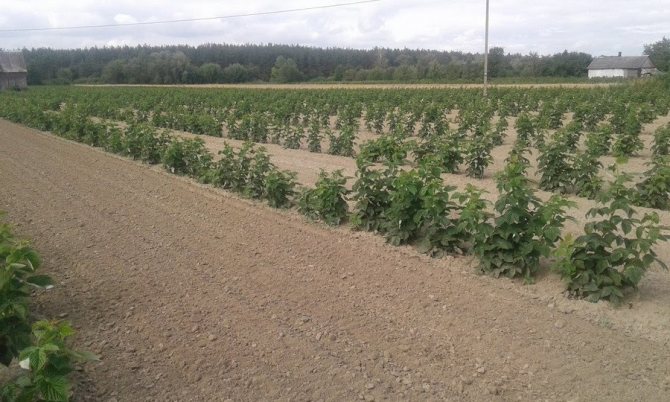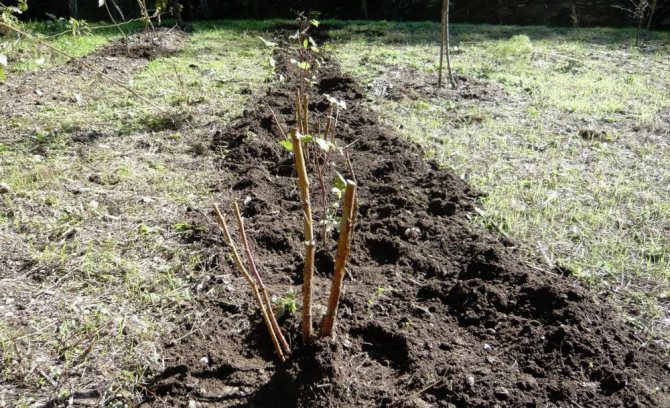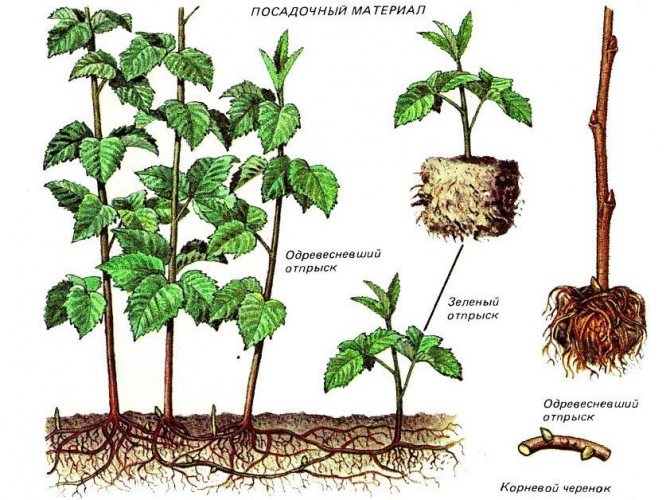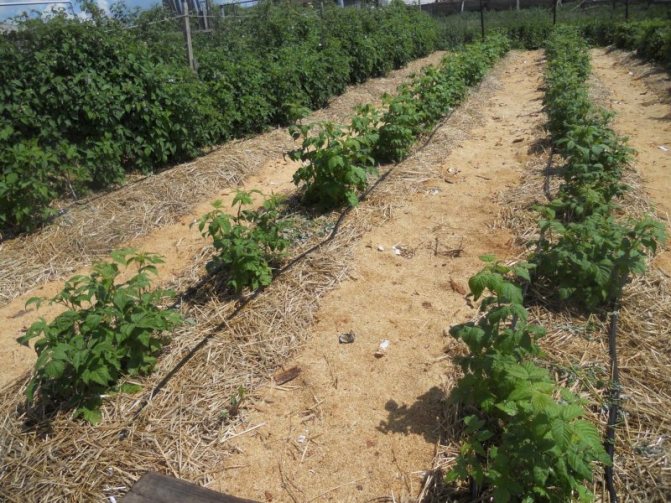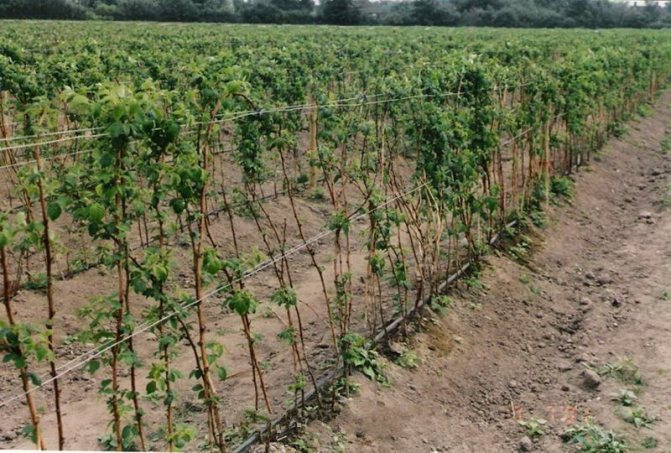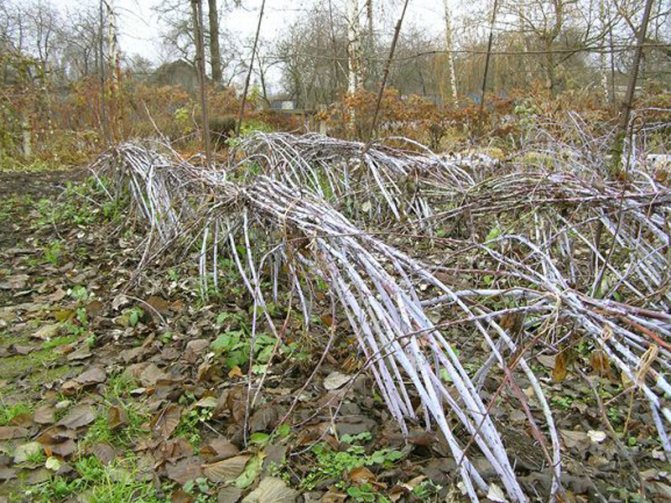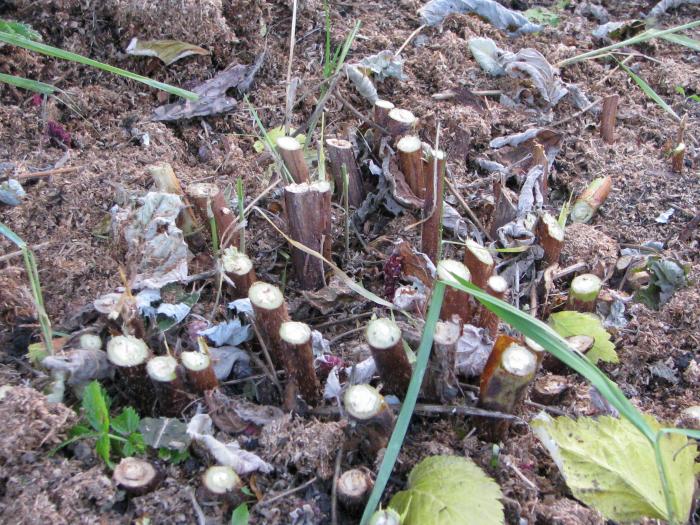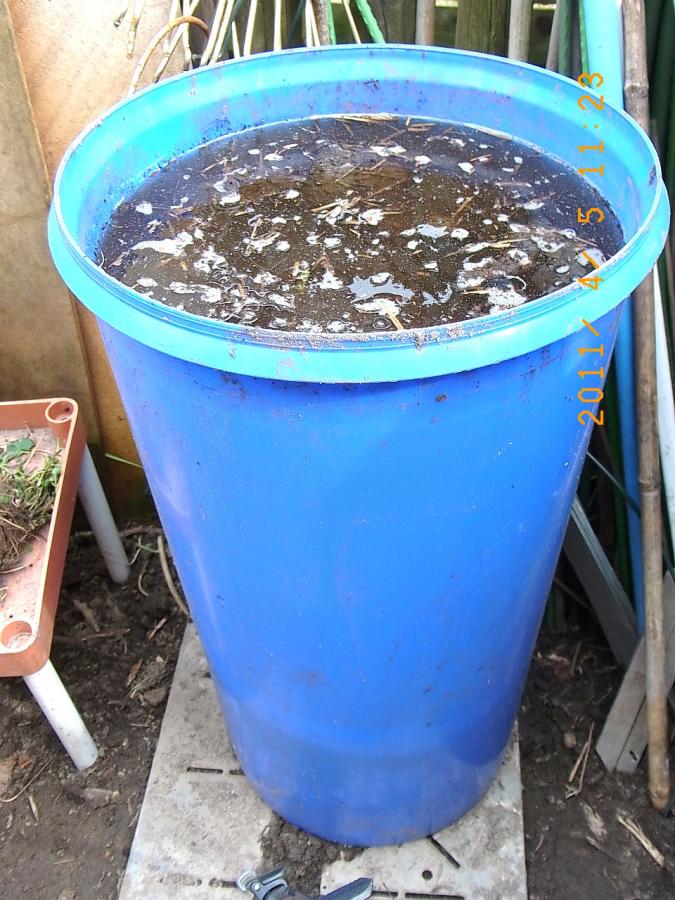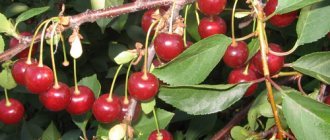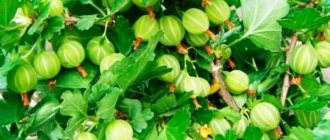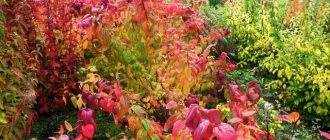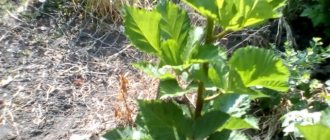Raspberries have long been firmly established in almost all garden plots of our country, and not only ours. There are a lot of varieties of tasty and healing berries, but our breeders do not stop at what we have.
They develop more and more new, improved varieties with high yields, large-fruited, resistance to weather conditions and morbidity.
Raspberry Caramel - description of the variety, photo - is such an innovation. And this variety is very close in taste and chemical composition to its forest relative.
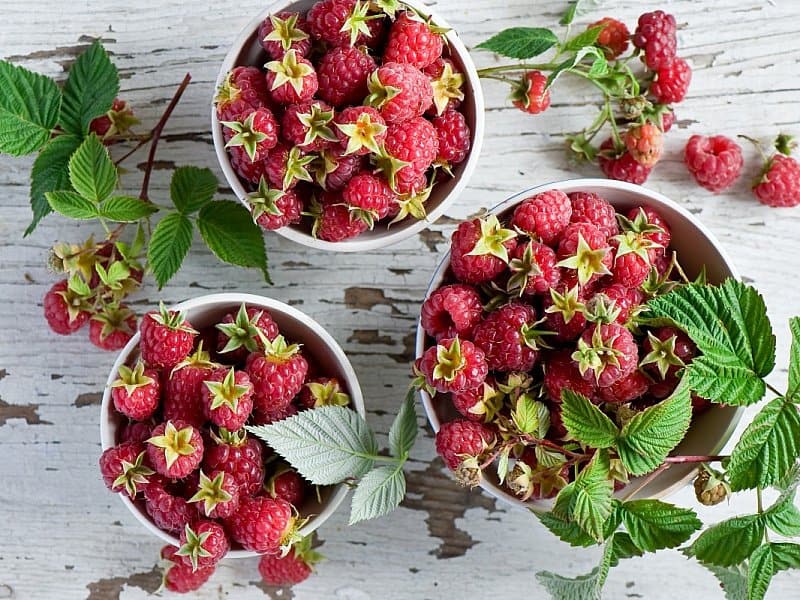
Description of the variety and its characteristics
The repairing variety of raspberries Caramelka is the result of many years of work by the Nizhny Novgorod breeder I. Shiblev. It was created quite recently - in 2013, and in 2020 it was registered in the State Register of Russia for growing throughout our country.
Description of the bush
Caramel bushes not only give fragrant berries, but are also a wonderful decoration for any garden plot:
- plants are strong, medium-sized and compact, reaching 1.5 m in height;
- the bushes give numerous powerful shoots that can withstand the weight of the berries without any problems;
- there are a small number of thorns on the branches;
- plant leaves - beautifully shaped, dark green;
- flowers are not very large, white, collected in numerous brushes;
- the bushes begin to bear fruit already in the year of planting, if they were planted in the spring;
- bushes do not require a garter.
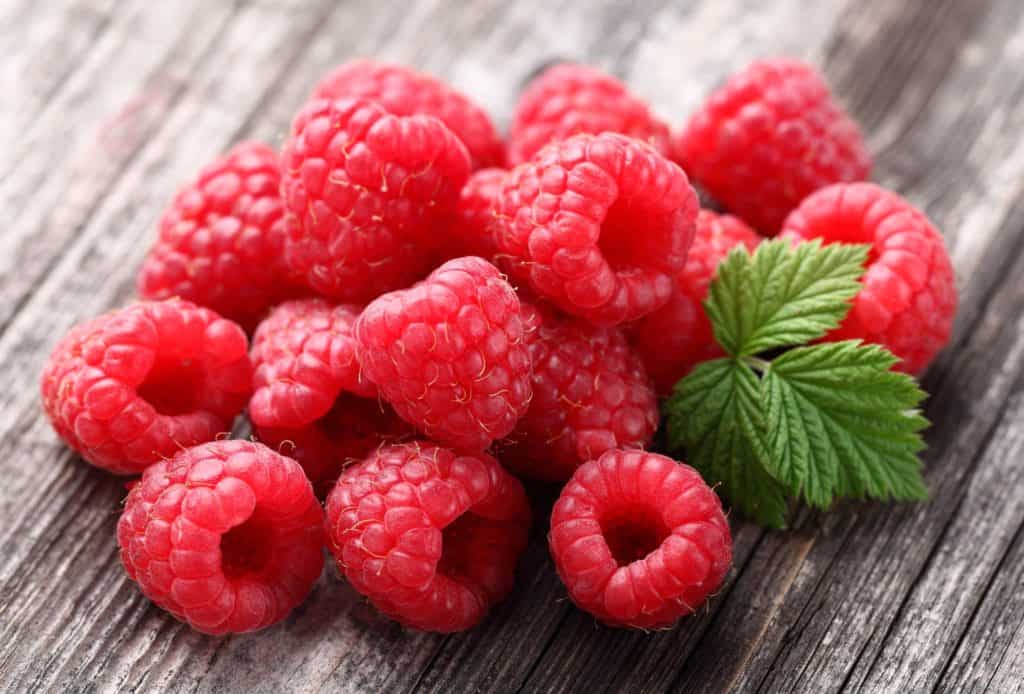

Flowering and fruiting
Flowering begins in June and continues throughout the summer. The plants have flowers of both female and male types of flowering, therefore, Caramel does not require pollinators - the variety is self-fertile.
The first berries ripen by mid-July, and fruiting continues until autumn frosts. The crop is harvested as the fruit ripens.
Description of berries
The fruits of Caramel are just a sight for sore eyes:
- berries are very large, weighing up to 12 g, have a beautiful conical shape;
- fruit color - deep red;
- the pulp is juicy and tender, but rather dense;
- the taste is very sweet, without sourness;
- the fruits have an unsurpassed aroma of forest raspberries.


100 g of pulp contains:
- sugars - about 10%;
- acids - about 0.96%.
Using
Caramel berries are versatile. They are used to make jam, make jams and confitures. The fruits are used to make desserts. They are rubbed fresh with sugar.
Also, the berries of the variety can be frozen or dried. Due to the high sugar content, sweet alcoholic drinks - liqueurs and liqueurs - are made from Caramel.
Yield
The yield of the Caramelka variety is high. About 5 kg of berries are easily harvested from one bush, and even more with good care. The fruits ripen simultaneously both on the shoots of the first year and on two-year-olds.
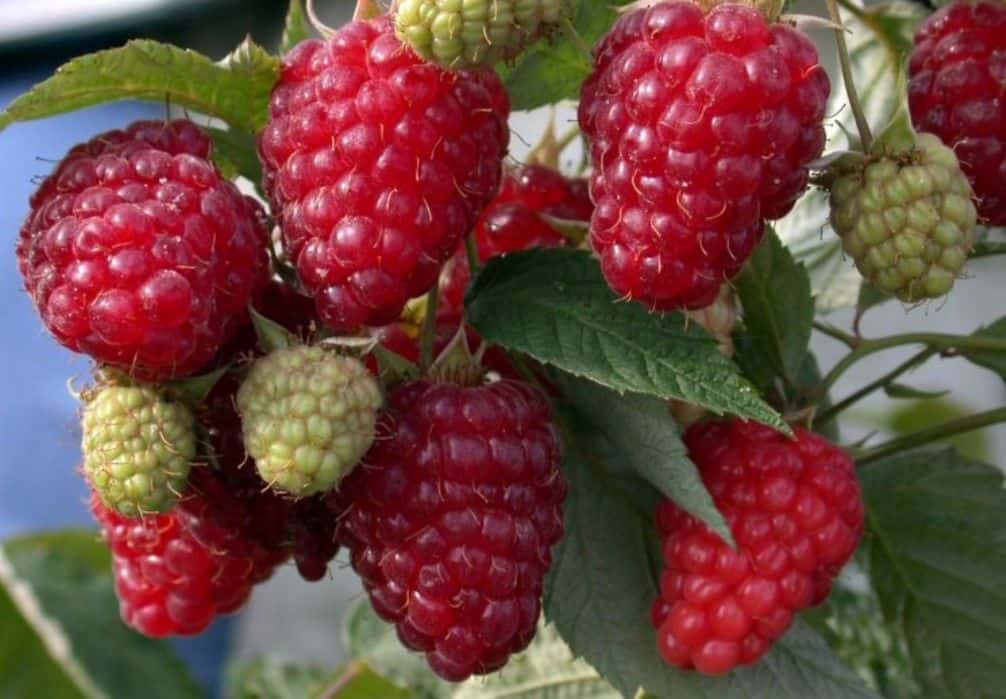

Storage times and transportability
Caramel berries, due to their density, are stored much longer than the fruits of other raspberry varieties, and are also easily transported over long distances, therefore, this variety is most often grown on a commercial scale.
Resistant to weather conditions
The raspberry variety Caramel tolerates frosty winters well, due to its high frost resistance, however, the variety is very vulnerable to droughts, therefore, in dry summers, it requires constant watering. In a rainy summer with a predominance of cloudy days, the yield of the variety decreases slightly.
How to choose healthy seedlings when buying
In order to get the desired harvest, you need to choose the right seedlings even before planting. First of all, they must be healthy so as not to die during the growing season. For remontant varieties, this is especially important, since fruiting occurs early, and the bushes grow quickly.
It is best to purchase seedlings in specialized stores. To choose a future bush, you must adhere to certain rules.
First of all, remember that spring seedlings do not always have leaves. Therefore, if the selected specimen has them, this may indicate that the seedling has undergone wintering and, at the same time, most likely, the basic rules of wintering were not followed.
These sprouts look beautiful, but purchasing them can be a mistake. These seedlings of raspberry "Caramel" took a lot of effort to build up foliage, and after planting they may not bloom in the first year, despite all the efforts and adherence to the rules of care. In addition, such specimens will take root worse than unsightly twigs.
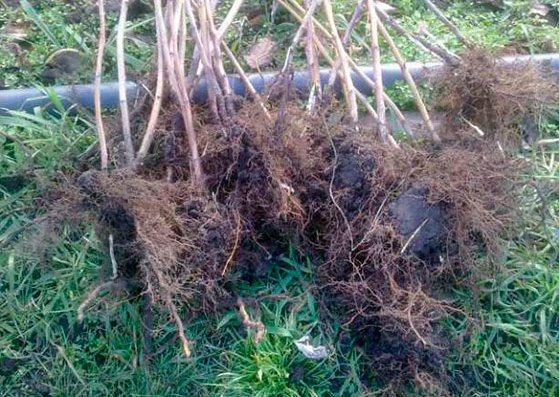

Attention should also be paid to the fact that there are no dried, poorly breaking leaves on the seedlings. This may indicate that the seedlings are harvested incorrectly, or they are damaged by insects. Such twigs simply will not take root in the area.
Last year's shoots should not show signs of mold or disease (dark or light spots may indicate their presence). The cut of the seedling core should be the same tone as the subcrustal layer of the raspberry.
Before making the final choice, you need to carefully examine the roots of young raspberries - they should be alive and easy to bend. It will be nice if the roots are already placed in a special substrate in advance or packed in a film with a nutrient mixture.
Important! Raspberry seedlings should be even
—
atypical bends and knots on the stem indicate the possible presence of root cancer.
Diseases and pests
Caramel is quite resistant to most diseases and pests, however, there is still a small risk of morbidity. Plants can get sick:
- septoria;
- purple spot;
- anthracnose;
- verticilliasis;
- chlorosis.
Also, this variety can be affected by pests:
- crimson leaf aphid;
- raspberry stem fly;
- raspberry-strawberry weevil;
- crimson beetle.
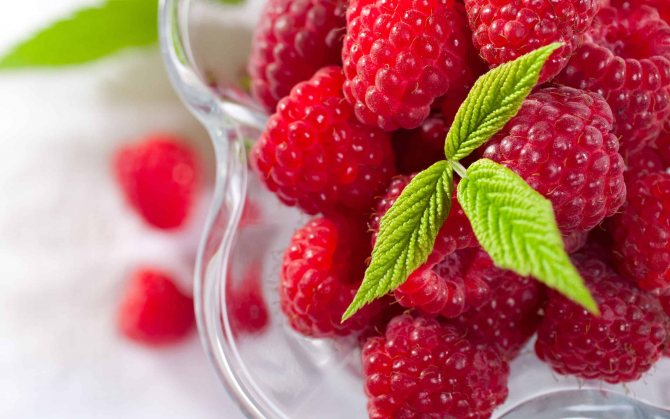

Spring treatment of bushes with a 1% solution of Bordeaux liquid will save from septoria disease (for 10 liters of oxen - 100 g of lime and copper sulfate). If the plants are sick, then it is necessary to remove and burn the diseased shoots and leaves, and treat the healthy parts with Fundazol or Ditan M-45.
For prophylaxis against purple spot and anthracnose in the spring, before bud break, the plants are sprayed with a 4% solution of Bordeaux liquid or a 3% solution of Nitrofen, and in summer, after flowering, with a 1% solution of Bordeaux liquid.
If raspberries get sick with verticillosis, then it must be treated with Previkur, Vitaros or Trichodermin.
In case of chlorosis, all diseased plants must be destroyed, and the remaining ones should be sprayed with a 30% solution of Methylmercaptophos.
In order not to be pestered by insect pests, in the spring, before budding, the bushes must be treated with Karbofos or Iskra or Decis preparations.


Landing
To correctly plant raspberries on your site, you must follow the following simple rules:
- you need to choose the right place for the raspberry tree.It should be dry, open and sunny. The slightest shading will affect the yield of plants;
- groundwater should not run closer than 2 meters from the earth's surface;
- the soil in which they plan to plant the raspberry tree must be fertile and loose;
- before planting seedlings, it is necessary to prepare a place in advance - to dig up the soil, remove weeds and roots, apply fertilizers, organic and mineral;
- then make holes, about 60 cm wide and 40 cm deep. The upper fertile soil is mixed with compost and humus. Fertilizers Kemiru and Stimul are also added there. The hole is filled by a third with this mixture so that a mound is formed;
- then a seedling is placed there, properly spreading its roots, and covered with the remaining earth;
- the earth is tamped and watered abundantly.
Raspberries are planted either in the fall, in October, before the onset of cold weather, or in the spring, in April, when the threat of morning frosts has passed. If Caramel is planted in spring, then this year the plants will begin to bear fruit.
Care
Care for the variety Caramel consists of:
- watering. The variety is very demanding on the introduction of moisture, especially during dry periods. It is recommended to water the plants once every 2 weeks, and in a drought, the amount of watering is increased. One bush uses 1.5 buckets of water;
- the fruiting of the variety is long-term, so the plants need fertilizing, which are carried out 3 times per season. In the spring, the bushes are fed with organic matter (an aqueous solution of cow dung or chicken droppings), during flowering, they are fed with the following mixture - superphosphate (3 tablespoons) and potassium sulfate (2 tablespoons) are diluted in 10 liters of water, and in the fall they are fed with the same superphosphate and potassium sulfate , only for 10 liters of water, 2 tablespoons of the first and one tablespoon of the second fertilizer are taken;
- tying, which is done so that the bushes do not bend;
- preparation for winter and pruning, which is carried out after harvest. It is recommended to cut off all aerial shoots, leaving the roots, which are covered with spruce branches, straw or peat for the winter. If pruning is not carried out, then the bushes must be bent to the ground, tied and covered with covering material. This is done in regions with frosty winters. In the south, the shelter can be omitted.
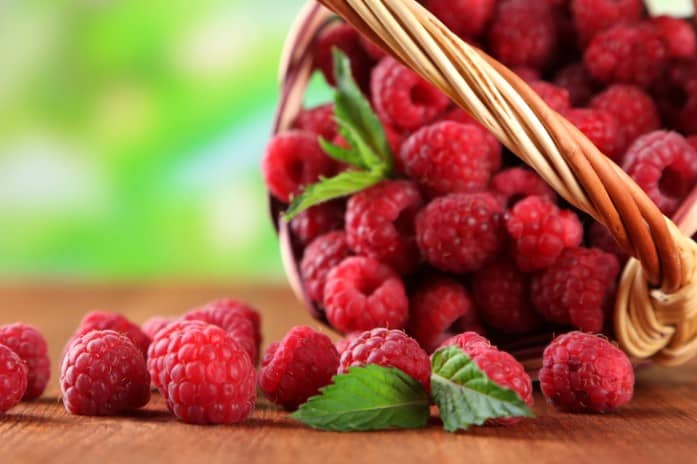

General rules of agricultural technology
Compliance with simple rules of agricultural technology will help achieve high success in growing remontant raspberries Caramel.
Planting pattern and density
Caramel saplings can be planted in the ground both at the beginning of March and at the end of September. Seedlings with a fibrous root system and the rudiments of young shoots take root best of all.
An area open to sunlight is suitable for growing fruit and berry crops. The plant does not like wind, drafts and close occurrence of groundwater. An area with loose and fertile soil of neutral acidity is suitable for breaking raspberries.
The planting density of the Caramelka variety recommended by the originator is 3300 seedlings per 1 hectare of land. In this case, the distance between the rows should be at least 2 m, between the holes - from 0.7 to 1 m.
Recommended and unsuitable neighbors
It is equally important to choose the right "neighbors" for the future raspberry tree. The Caramelka variety feels comfortable next to strawberries, foxglove, barberry and red currants.
We recommend planting sorrel, basil, dill, parsley and garlic next to remontant raspberries. Fragrant herbs scare away harmful insects from fruit and berry bushes.
Author's advice
Asters, delphinium and various garden crops are considered to be successful "neighbors". But neighborhoods with grapes, sea buckthorn, elderberry, jasmine, nasturtium, iris and marigolds are best avoided.
Irrigation rates and timing of fertilization
Raspberry Caramel is characterized by low drought resistance. Shrubs should be watered abundantly and often. But do not forget that excess moisture is one of the reasons for the appearance of various types of rot.
The average irrigation rate is 2 buckets of standing water for each bush, the frequency is 1 time in 14 days. With intense precipitation, the time interval between waterings is increased.
Since the fruiting of the variety is long, the plant needs additional feeding. You can fertilize the remontant raspberry Caramel according to the following scheme.


Fertilization chart
Many novice gardeners forget that fertilizers applied to dry soil can burn the root system. Before adding organic matter or mineral fertilizers, the soil under the bush is abundantly moistened.
Tying to trellises
The need for a garter is controversial. Some gardeners claim that the plant can cope with the load on its own, while others insist on tying the shoots to the trellises. For even distribution of shoots, it is recommended to fix the bush to a single-lane trellis.
The need for autumn pruning
Spring pruning, which often falls in April, involves removing dried and frozen shoots.
Autumn pruning is mandatory. At the end of fruiting, the ground part of the fruit and berry shrub is cut off almost to ground level. The height of the stumps is from 1 to 3 cm. This method of pruning contributes to the rejuvenation of the shrub and, accordingly, has a beneficial effect on future yield.
A bush cut at the root can not be covered for the winter. In the northern regions, raspberries are insulated with dry opal foliage, hay, straw or spruce branches.
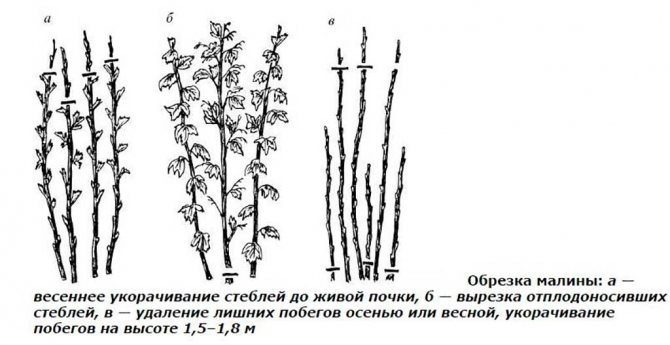

Options for trimming and garter repair raspberries


Advantages and disadvantages of the variety
The advantages of Caramelka raspberries include:
- high yields;
- large-fruited;
- remontability, that is, long-term fruiting;
- excellent taste of fruits;
- high transportability and presentable appearance of berries;
- long shelf life of fruits;
- the beginning of fruiting in the year of planting;
- high frost resistance and resistance to a number of ailments;
- high sugar content in berries.
The disadvantages are:
- poor tolerance to dry weather;
- the formation of a large number of shoots and overgrowth;
- whimsical care.
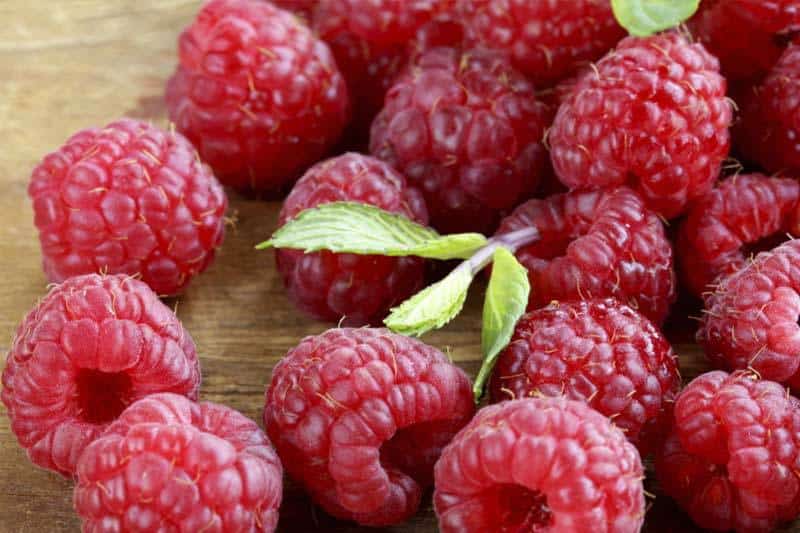

Expert answer: why raspberry berries grow together Caramel
The phenomenon of berry accretion is characteristic not only of Caramel raspberries. There are two reasons for this: excess moisture and viral diseases. The berries get microcracks when poured and grow together into one.
Raspberries of this variety grow together, most likely, for the first reason, since they have good immunity to diseases. But many have heard about its low drought resistance. Therefore, irregular watering, as well as a violation of the norms of the volume of water (excessive waterlogging) can cause the berries to grow together in raspberries Caramel.
A short video about raspberries Caramel will tell you more about the variety
Gardeners reviews
Despite the fact that the Caramelka variety was recently born, both amateur gardeners and farmers fell in love with it. This variety, due to the unsurpassed taste of berries, is most often preferred to other remontant varieties, even though it is rather whimsical to care for.
Ivan, 60 years old
“There are many varieties of raspberries growing on my garden plot, including remontant, however, with the advent of Caramel, I was disappointed in many of them. Very fruitful and large-fruited, it amazed me with the taste of berries, which are very sweet and aromatic.
I am pleased to make of them a delicious liqueur of my own production, which is very popular with my friends. "
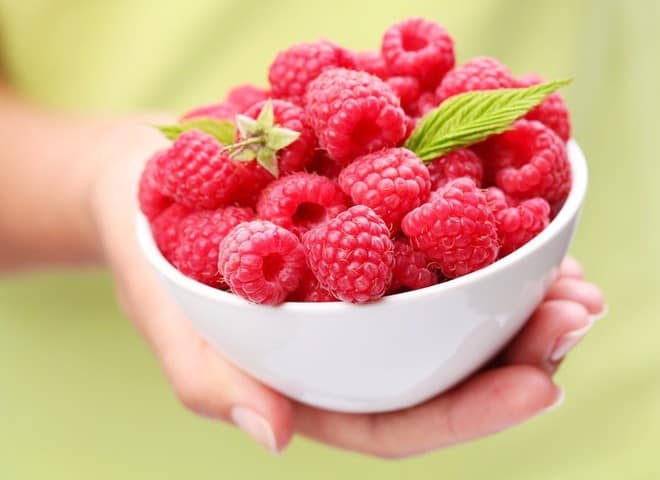

Tatiana, 49 years old.
“I read about the raspberry variety Caramelka on the Internet and decided to plant it in my garden. I also bought seedlings through the online store. I am very glad that they came to me in good condition, since the price for them is quite high.She planted raspberries in the fall, and the next year she began to bear fruit.
Berries are just a sight for sore eyes - large, beautiful colors, and what taste and aroma! Caramel immediately became everyone's favorite, even though it requires very careful care. I was pleased with my purchase. And I recommend it to everyone, you will not regret it. "
The new raspberry variety Caramelka, despite its recent appearance, made a splash among gardeners, due to its high yield, duration of fruiting and taste of the fruit. They love him, they plant him with pleasure in their backyards and gardens. Try it yourself.
Breeding features
The variety is relatively young, so it is difficult to find Caramel raspberries for breeding with friends or neighbors. But if you're lucky, you can propagate it by cuttings or young green layers. It is advisable to cut the cuttings in the spring from two-year-old shoots. You can root them in a greenhouse or container.
Attention!
Raspberry Caramel has several more disadvantages. Many gardeners talk about high prices for seedlings, changing varieties and poor quality planting material. It is best to acquire new varieties in proven nurseries. The seedling should have a healthy appearance and long, thin, very flexible roots.



